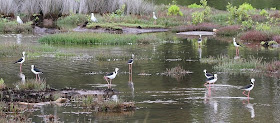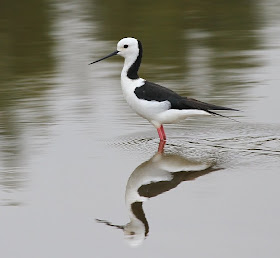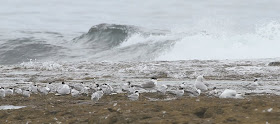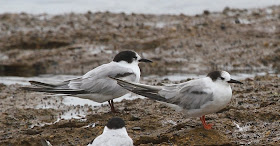
Most plovers adopt a 'Look-walk-peck' hunting strategy. These plovers were odd in that they did the opposite - 'peck-walk-look'! They would always make a little run after pecking at the surface.




These two males were in breeding plumage. They looked very similar, except that one had more black on the sides of the neck and breast.

Two birds in fresh plumage. I'm not certain, but I think the bird on the left is a juvenile, and the other is a non-breeding adult.





I was fortunate to come across a pair of Hooded Plovers on a beach in Victoria. They had young, so I kept my distance.



The other 'bird' in several of these pictures is a Short-tailed Shearwater corpse. The tideline was littered (e.g. 20 birds in a 50 metre stretch) with these wherever I looked, in both Victoria and NSW. I don't know whether such high mortality rates are 'normal', or what causes them.



As I lay prone on the sand, one bird wandered over, whether to check me out or just by accident I wasn't sure. Great birds!





































